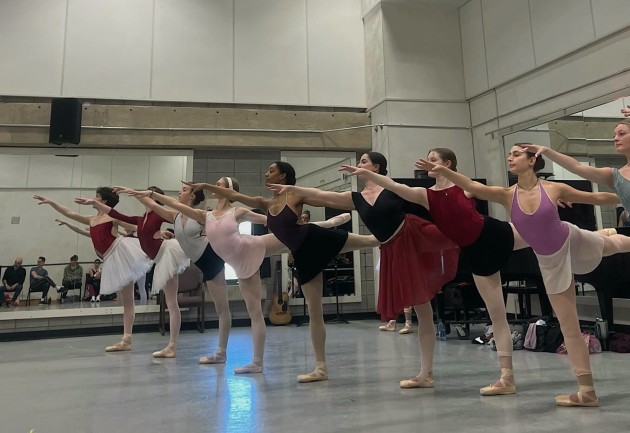How NOT to cancel 'La Bayadere'

Phil Chan is a choreographer, director, advocate, and author of Final Bow for Yellowface and Banishing Orientalism. Here he responds to the previous article, 'Should La Bayadere be cancelled?', which created a huge response on our facebook page.
As ballet expands beyond its origins as a strictly Eurocentric art form, folks on both sides of the footlights are experiencing some growing pains. I’m the co-founder of an organisation called Final Bow for Yellowface (www.yellowface.org), that has successfully gotten companies to eschew yellowface on our stages. A big part of my work as a director and choreographer is to reimagine outdated classics from Europe that still speak to us today, removing racial caricature that prevents these works from being widely enjoyed. As a person of Asian heritage, deeply involved in the ballet community, I’ve got a lot of skin in the game; I very much want to preserve the best from my dance heritage, but also want Asian characters on our stages to be represented with integrity. It’s possible to do both, as I’ve discovered in reworking the popular ballet, La Bayadère.
My work is the opposite of cancel culture. I don’t advocate pulling works out of repertory just to be"politically correct", but I believe we do ourselves a disservice by presenting racial caricatures from over 100 years ago. I advocate for replacing caricature with character – with the goal of greater integrity instead of a “cultural accuracy” no outsider’s vision can really claim.
Before folks clutch their pearls about changes, just remember we do this all the time with Shakespeare and in opera. Nothing has to be lost by reimagining an old story with a new location if we first understand the original context and how that influenced certain artistic choices. Looking at Bayadère, we must ask, why India? In the 1870s, India would have been seen as an exotic and exciting locale for melodrama. Petipa’s audiences were bombarded with stories in the newspapers about the Prince of Wales’ visit to India, and so he knew it would be an attractive and popular setting. In his La Bayadère, India was treated as a fairy tale kingdom: the music is not Indian; the characters' names are not Indian; the story is not one an Indian person would recognise; and any references to Hindu and Buddhist symbols are used only as exotic window dressing. Setting the work in “fantasy India” offered an excuse for crazy sexy costumes, and allowed for new choreographic and musical patterns that broke the European rules, as well as for exploration of taboo or provocative subjects, such as class, violence, female agency and control.

Any re-staging of a ballet should preserve the “spirit” of the original, while offering a version today’s audiences can appreciate. Two attractive solutions present themselves: first, to lean into the cultural scenario with the goal of “authenticity". Alternatively, we could lean out, aided by abstraction, symbolism and a new scenario, thus keeping it congruent with the original while making it easier to relate to for today’s audiences. La Bayadère demands the second kind of re-staging because the overall dynamic of a “fantasy India” is difficult to redeem when we don’t yet have racial equity in the greater field; how many ballets by Indian choreographers have you seen?
I sympathise with the impulse to infuse authenticity into a ballet like La Bayadère. I commend choreographers and companies who consider a culturally hybrid approach (keep the Indian setting but make it seem authentic, even though it’s not really possible). To have cultural integrity in this scenario, I strongly encourage creatives to include artists from the culture they are depicting as principal collaborators. However, the question I’m interested in is, “Does today’s La Bayadère have to be set in India?” As an Asian person who’s aware of all the work our field needs to do to improve representation of non-European cultures, I wonder if we could bypass the cultural issues altogether. What else could it be?
For the past six years, I’ve been working alongside dance notation expert and musicologist Doug Fullington to answer that question. Our answer is a resounding yes, and our new version, called Star on the Rise, will premiere on March 29 at Indiana University. Instead of in an exotic fantasy India, we’ve set the action in 1920s Hollywood during the art deco golden age of the movie musical. Following a plot similar to that of Singin’ in the Rain, our story follows Nikki, the up-and-coming star on the rise who dreams of making movies with her fiancé Sol, but is threatened by the jealous Pamela Zatti, the reigning Queen of the Silver Screen. Sound familiar?
Unlike other choreographers who are redoing the steps based on their own individual style and expression, we’re taking the most conservative approach possible when it comes the choreography; we’ve retained choreographer Marius Petipa’s steps documented in notations made around 1900. The brilliant orchestrator Larry Moore, an expert on early movie musicals, has also rescored the Minkus score to sound like a big band jazz musical in the vein of Cole Porter and George Gershwin. Instead of “Indians", we’ve got dancing cowboys. More importantly, now we’re telling our own story—an American fairy tale—and not a story of exotic people we don’t really understand, all while preserving the original music and dances.
I’d like to invite you to see this for yourself and be the judge of the how effective we were. Star on the Rise will be live-streamed on March 30 at 10:30am AEST (March 29 at 7:30pm EST) and March 31 at 5:30am and 10:30am AEST (March 30 at 2:00pm and 7:30pm EST). The stream will be introduced by Misty Copeland, and be available here: https://iumusiclive.music.indiana.edu/#/
All pictures show students of Indiana University’s Jacob’s School of Music, in the US. Photos by Indiana Cote.



